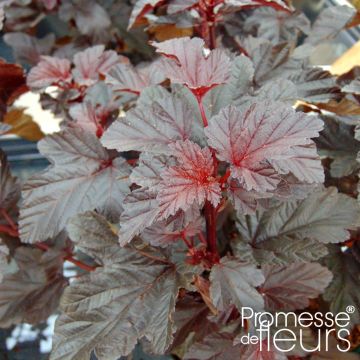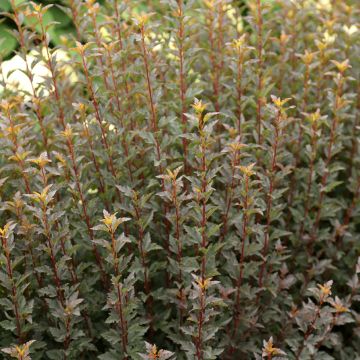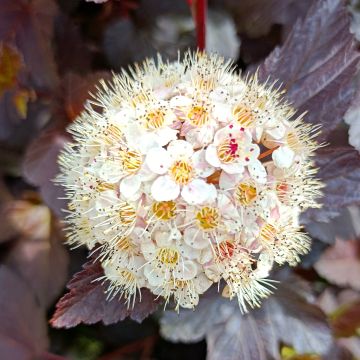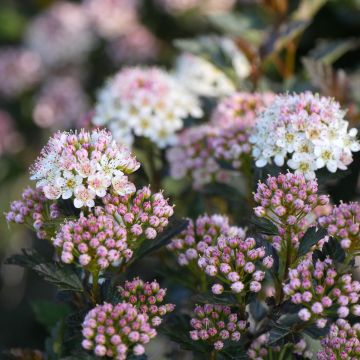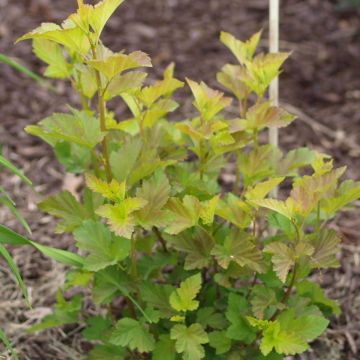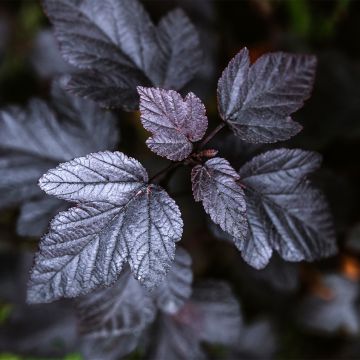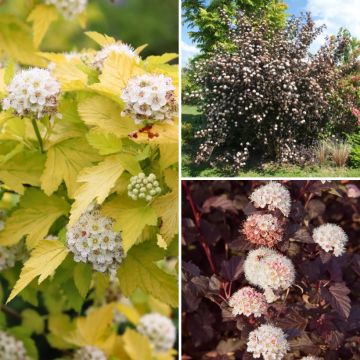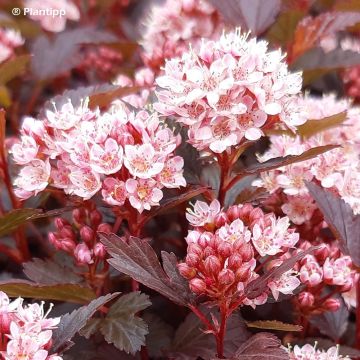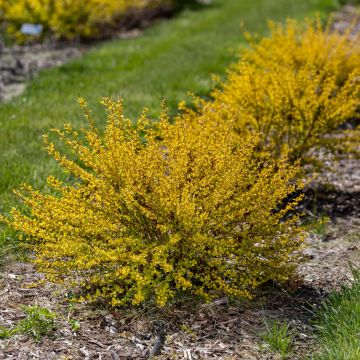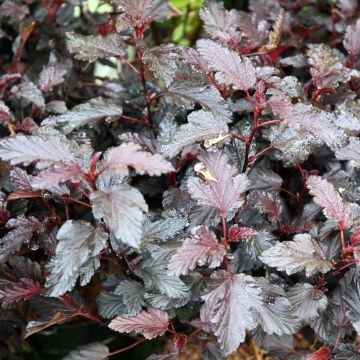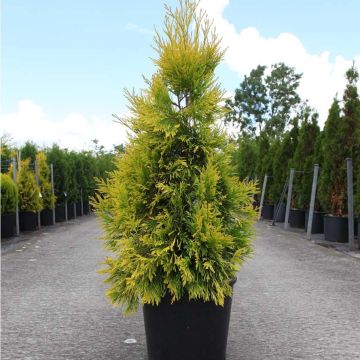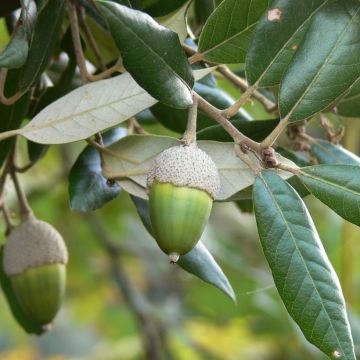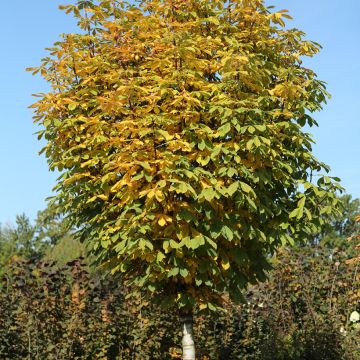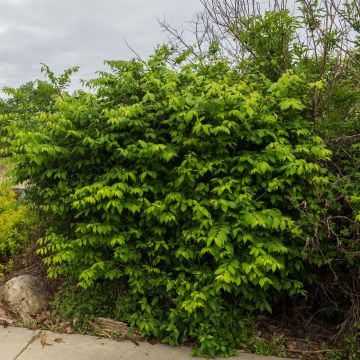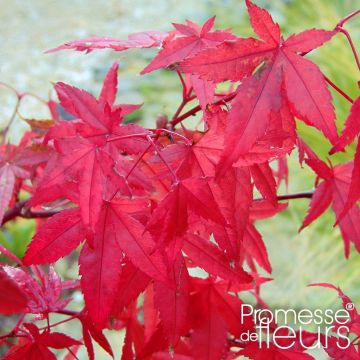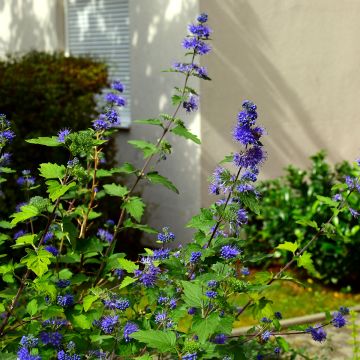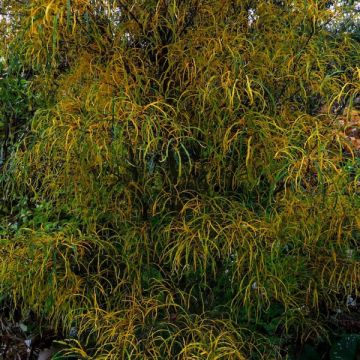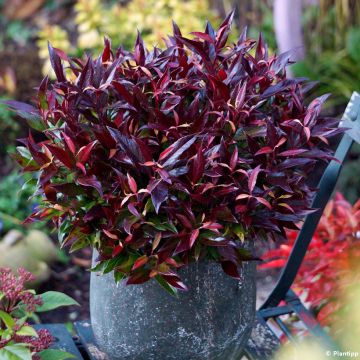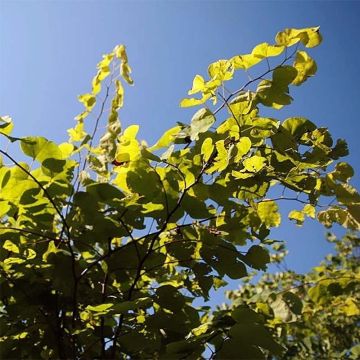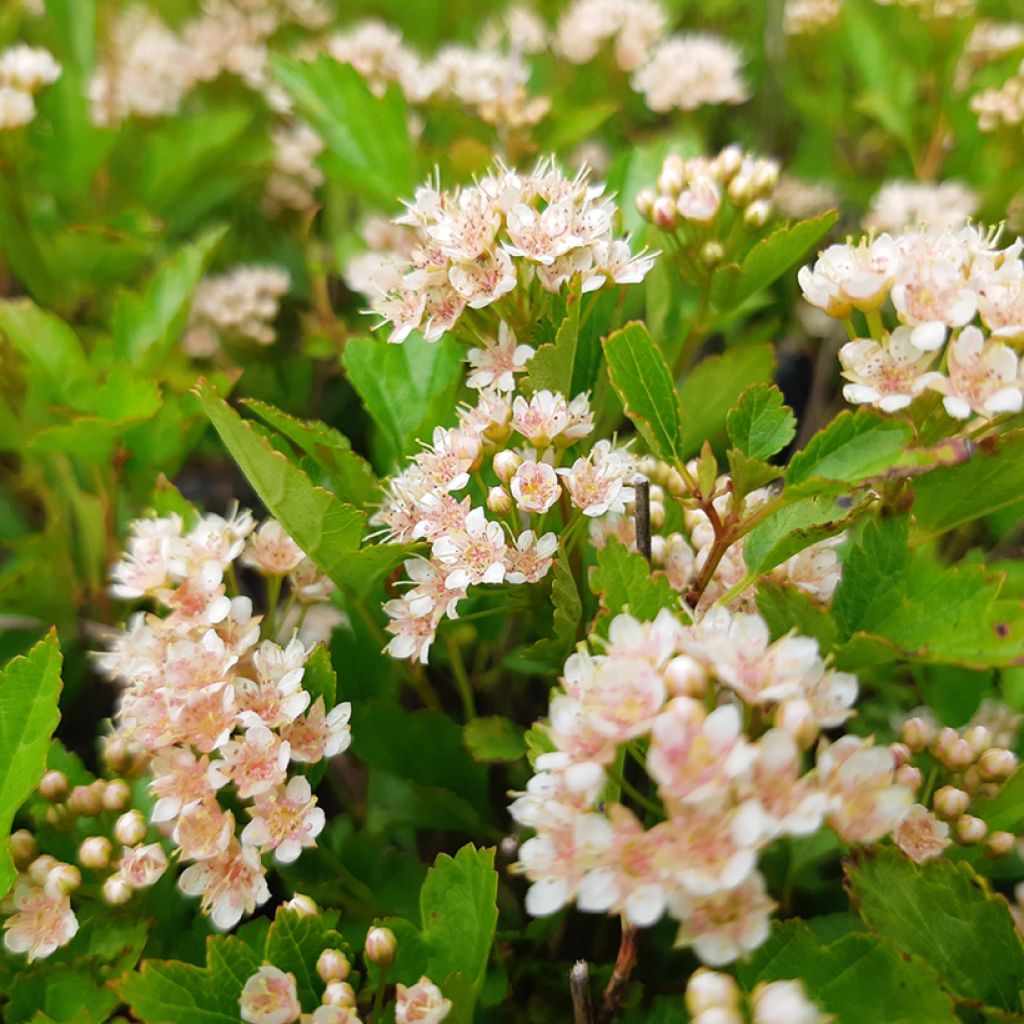

Physocarpus opulifolius Little Greeny
Physocarpus opulifolius Little Greeny
Physocarpus opulifolius Little Greeny® ('Hoogi043'PBR) EU 61757
Common Ninebark, Eastern Ninebark
This item cannot be shipped to the selected country
Delivery charge from €5.90
More information
Schedule delivery date,
and select date in basket
This plant carries a 24 months recovery warranty
More information
We guarantee the quality of our plants for a full growing cycle, and will replace at our expense any plant that fails to recover under normal climatic and planting conditions.
From €5.90 for pickup delivery and €6.90 for home delivery
Express home delivery from €8.90.
Does this plant fit my garden?
Set up your Plantfit profile →
Description
Physocarpus opulifolius Little Greeny, known by its cultivar name 'Hoogi043', is a very compact and bushy variety with the shiny green foliage of the common ninebark. Its white flowering in early summer, which takes the form of numerous small corymbs, is very decorative. It gives way to small ornamental red fruits. Finally, in winter, the brown bark is revealed after the leaves have fallen. This ninebark needs little maintenance and is used for mass planting, in flower beds, borders, and also in pots on the terrace or balcony. It is undemanding and tolerates any type of soil in full sun or partial shade.
Physocarpus opulifolius belongs to the large family of Rosaceae, which includes most of our temperate fruit trees, many wild plants, and numerous ornamental genera such as roses. It is native to North America, where it is found naturally in a wide geographical area, covering a wide diversity of soils and climates. This explains its great adaptability and its ornamental interest, the species itself already has quite decorative foliage. However, it is somewhat neglected in favour of different cultivars with coloured, variegated, golden, orange, purple, or almost black foliage.
Little Greeny is a variety with green foliage that is still ornamental. This small shrub, with a more or less ball-shaped and bushy habit, reaches only 50 cm high and 30 cm wide at maturity. Its vegetation is relatively dense, carried by branches that grow in all directions, giving it a beautiful appearance in winter when the leaves have fallen, exposing its decorative brown bark, which peels over time. The medium-sized leaves, about 6-8 cm long and 4-5 cm wide, are trilobed, with each lobe slightly toothed. Their evocative shape gives this bush the nickname of Ninebark with sapwood-like leaves. The flowering usually spreads over May-June and takes the form of white corymbs, in the shape of domes, about 4-5 cm in diameter. They consist of a cluster of small flowers with five petals and protruding stamens, which are loved by pollinating insects. They then develop into quite decorative red fruits loved by birds in autumn when the vegetation takes on a beautiful orange hue, contrasting well with the small fruits.
This bush is good for wildlife, extremely cold-resistant and tolerates pruning well, although it is not necessary. It only dislikes heatwaves and drought. Pair it with Weigela florida 'Naomi Campbell', for contrasting foliage colour. At its base, you can plant some perennial geraniums or Heucheras, with foliage that has almost all the colours of the vegetable kingdom, as a border or in the foreground of a flower bed.
Report an error about the product description
Plant habit
Flowering
Foliage
Botanical data
Physocarpus
opulifolius
Little Greeny® ('Hoogi043'PBR) EU 61757
Rosaceae
Common Ninebark, Eastern Ninebark
Cultivar or hybrid
Other Physocarpus
Planting and care
Plant Physocarpus opulifolius Little Greeny in ordinary, but deep, rich and moist soil, preferably neutral to acidic. It dislikes an excess of limestone. Soak the root ball in a bucket of water for fifteen minutes, while you dig the planting hole (30 cm in all directions). Add some compost to the existing soil. Put the root ball in the ground, fill in all around and water abundantly. It is important to avoid letting the soil dry out in summer, and you can shower the foliage during heatwaves (in the evening, never under the sun otherwise there could be a magnifying effect that would burn the foliage). This bush will thrive in partial shade or in the sun, but the foliage may be slightly damaged in excessively sunny and scorching conditions.
Planting period
Intended location
Care
This item has not been reviewed yet - be the first to leave a review about it.
Striking foliage shrubs
Haven't found what you were looking for?
Hardiness is the lowest winter temperature a plant can endure without suffering serious damage or even dying. However, hardiness is affected by location (a sheltered area, such as a patio), protection (winter cover) and soil type (hardiness is improved by well-drained soil).

Photo Sharing Terms & Conditions
In order to encourage gardeners to interact and share their experiences, Promesse de fleurs offers various media enabling content to be uploaded onto its Site - in particular via the ‘Photo sharing’ module.
The User agrees to refrain from:
- Posting any content that is illegal, prejudicial, insulting, racist, inciteful to hatred, revisionist, contrary to public decency, that infringes on privacy or on the privacy rights of third parties, in particular the publicity rights of persons and goods, intellectual property rights, or the right to privacy.
- Submitting content on behalf of a third party;
- Impersonate the identity of a third party and/or publish any personal information about a third party;
In general, the User undertakes to refrain from any unethical behaviour.
All Content (in particular text, comments, files, images, photos, videos, creative works, etc.), which may be subject to property or intellectual property rights, image or other private rights, shall remain the property of the User, subject to the limited rights granted by the terms of the licence granted by Promesse de fleurs as stated below. Users are at liberty to publish or not to publish such Content on the Site, notably via the ‘Photo Sharing’ facility, and accept that this Content shall be made public and freely accessible, notably on the Internet.
Users further acknowledge, undertake to have ,and guarantee that they hold all necessary rights and permissions to publish such material on the Site, in particular with regard to the legislation in force pertaining to any privacy, property, intellectual property, image, or contractual rights, or rights of any other nature. By publishing such Content on the Site, Users acknowledge accepting full liability as publishers of the Content within the meaning of the law, and grant Promesse de fleurs, free of charge, an inclusive, worldwide licence for the said Content for the entire duration of its publication, including all reproduction, representation, up/downloading, displaying, performing, transmission, and storage rights.
Users also grant permission for their name to be linked to the Content and accept that this link may not always be made available.
By engaging in posting material, Users consent to their Content becoming automatically accessible on the Internet, in particular on other sites and/or blogs and/or web pages of the Promesse de fleurs site, including in particular social pages and the Promesse de fleurs catalogue.
Users may secure the removal of entrusted content free of charge by issuing a simple request via our contact form.
The flowering period indicated on our website applies to countries and regions located in USDA zone 8 (France, the United Kingdom, Ireland, the Netherlands, etc.)
It will vary according to where you live:
- In zones 9 to 10 (Italy, Spain, Greece, etc.), flowering will occur about 2 to 4 weeks earlier.
- In zones 6 to 7 (Germany, Poland, Slovenia, and lower mountainous regions), flowering will be delayed by 2 to 3 weeks.
- In zone 5 (Central Europe, Scandinavia), blooming will be delayed by 3 to 5 weeks.
In temperate climates, pruning of spring-flowering shrubs (forsythia, spireas, etc.) should be done just after flowering.
Pruning of summer-flowering shrubs (Indian Lilac, Perovskia, etc.) can be done in winter or spring.
In cold regions as well as with frost-sensitive plants, avoid pruning too early when severe frosts may still occur.
The planting period indicated on our website applies to countries and regions located in USDA zone 8 (France, United Kingdom, Ireland, Netherlands).
It will vary according to where you live:
- In Mediterranean zones (Marseille, Madrid, Milan, etc.), autumn and winter are the best planting periods.
- In continental zones (Strasbourg, Munich, Vienna, etc.), delay planting by 2 to 3 weeks in spring and bring it forward by 2 to 4 weeks in autumn.
- In mountainous regions (the Alps, Pyrenees, Carpathians, etc.), it is best to plant in late spring (May-June) or late summer (August-September).
The harvesting period indicated on our website applies to countries and regions in USDA zone 8 (France, England, Ireland, the Netherlands).
In colder areas (Scandinavia, Poland, Austria...) fruit and vegetable harvests are likely to be delayed by 3-4 weeks.
In warmer areas (Italy, Spain, Greece, etc.), harvesting will probably take place earlier, depending on weather conditions.
The sowing periods indicated on our website apply to countries and regions within USDA Zone 8 (France, UK, Ireland, Netherlands).
In colder areas (Scandinavia, Poland, Austria...), delay any outdoor sowing by 3-4 weeks, or sow under glass.
In warmer climes (Italy, Spain, Greece, etc.), bring outdoor sowing forward by a few weeks.

































